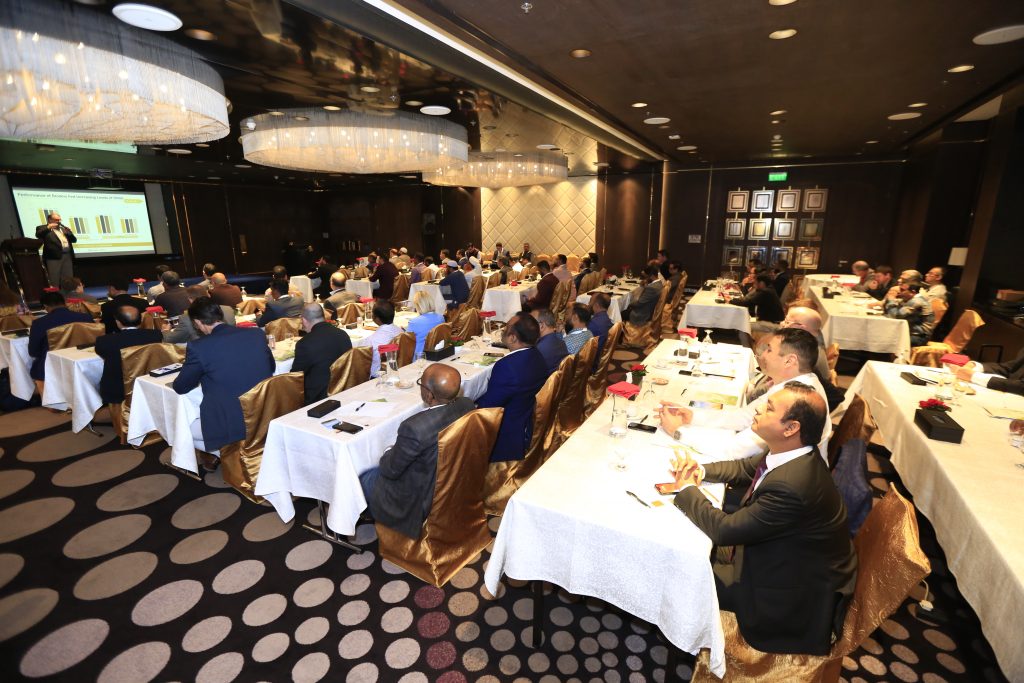Earlier this month, the U.S. Grains Council’s (USGC’s) India office held its inaugural Buyers and Sellers Conference in Dhaka, Bangladesh, where more than 100 local buyers had the opportunity to engage with nine U.S. agribusinesses through a series of one-on-one meetings and presentations showcasing the importance of using high-quality feed ingredients in key industries including poultry, aquaculture and dairy. As a result, sales were made and confirmed during the one-on-one meetings, and are in the process of being calculated.
Key topics included the use of U.S. distiller’s dried grains with solubles (DDGS) and U.S. corn, while also touching on the U.S. farmer perspective around best practices and proper grain storage management. Attendees were able to gain important information on how to address common challenges in the region, which includes access to lines of credit and learning about U.S. Department of Agriculture (USDA) financing initiatives, such as the GSM-102, a program that provides credit guarantees to support the financing of commercial exports of U.S. agricultural products.
“As one of the largest and most accessible markets in the subcontinent, this conference created an ideal atmosphere for Bangladeshi buyers to speak with new and existing sellers to conduct business,” explained Reece H. Cannady, USGC director in India. “At the same time, there are many regulatory challenges in Bangladesh, and buyers and sellers were able to work together and find solutions to overcome them.”
As Bangladesh’s industry grows, so does its need for imported feedstocks. Bangladesh is a regular importer of competitively priced Indian corn, which is projected to be unavailable on the global market in the coming years due to India’s ballooning demand for its own crop. Manager of Global Strategies and Trade Alexander Grabois gave a timely presentation discussing the increased available energy in U.S. corn, showing Bangladeshi buyers the value in buying U.S. corn over competing origins around the world.
“In the case of Bangladesh, buyers do not always get the opportunity to have face-to-face interactions with suppliers or consultants,” Grabois said. “By showing the value of U.S. corn to Bangladeshi buyers, we are creating opportunities for U.S. sellers and farmers to sell a higher quality product than their competitors, which is a win-win for both the U.S. agricultural sector and Bangladeshi end users.”
To complement the conference, sellers spent two days taking part in field visits to aqua ponds and feed mills. This allowed sellers to establish a greater understanding of the potential shown in Bangladesh, while also gaining perspectives on the challenges that end-users face. For both buyers and sellers, the visits created a unique opportunity to interact with customers and, in some cases, see U.S.-origin products in use.
“Activities like the Buyers and Sellers Conference are an important component of our programming, as they can be a direct driver of sales and market development,” Cannady said. “The message is simple—the U.S. agricultural sector wants to ensure sustainable growth in the Bangladeshi feed sector. If Bangladesh grows, U.S. farmers win.”

